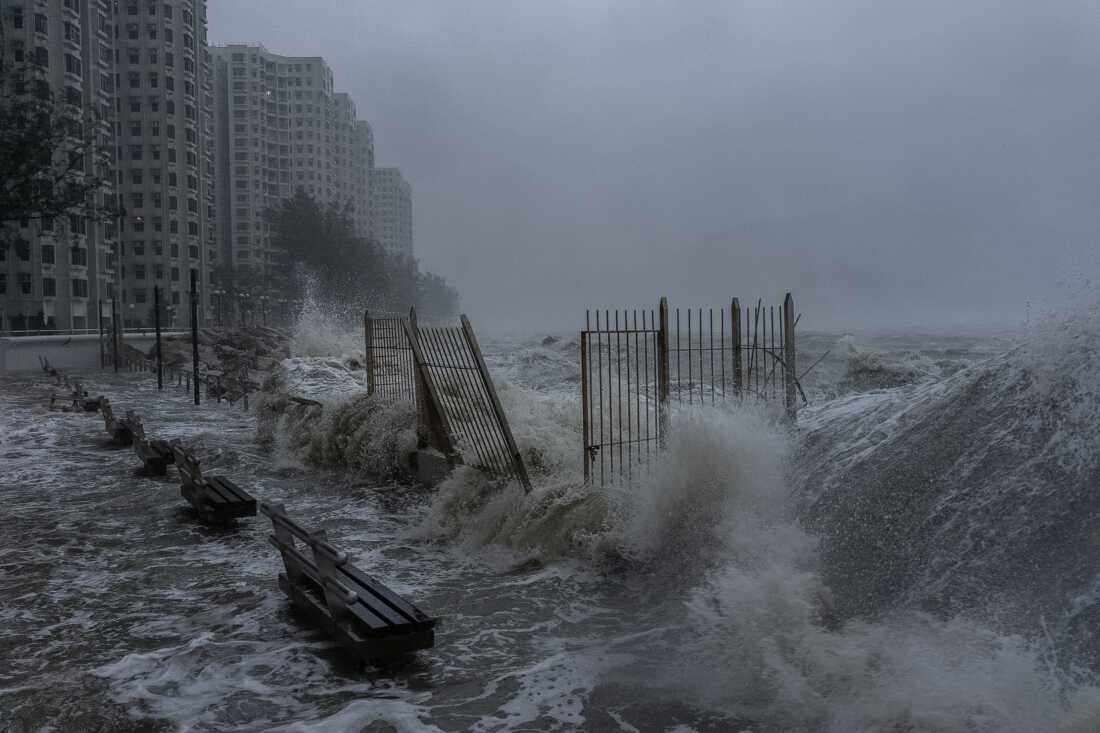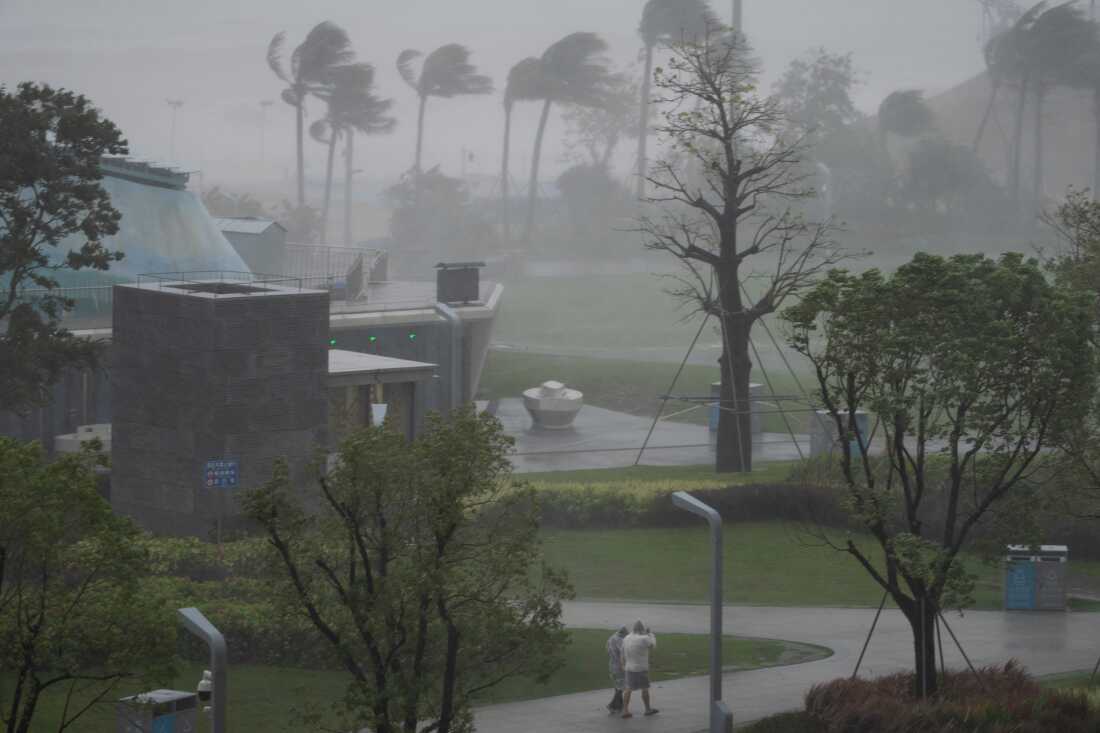Powerful waves slam the Heng Fa Chuen waterfront as Super Typhoon Ragasa nears Hong Kong on Wednesday.
Chan Long Hei/AP
hide caption
toggle caption
Chan Long Hei/AP
SHENZHEN, China – Typhoon Ragasa, one of the most intense storms in recent memory, unleashed towering waves that dwarfed streetlamps along Hong Kong’s waterfront and churned the seas off southern China on Wednesday, following a trail of devastation in Taiwan and the Philippines.
In Taiwan, flooding claimed 14 lives in a township, while the Philippines reported 10 fatalities linked to the storm’s impact.
Across Guangdong province, a vital economic region in southern China, nearly 1.9 million residents were evacuated as precautionary measures. Chuandao town’s weather station recorded wind gusts reaching 241 kph (approximately 150 mph) at midday – the strongest ever documented in Jiangmen city. Coastal areas of Zhuhai endured massive waves, while fierce winds and heavy rainfall caused widespread tree damage, littering streets with broken branches.
The national meteorological agency predicted that Ragasa would make landfall between Yangjiang and Zhanjiang cities by Wednesday evening. In response, schools, factories, and public transit were shut down in about a dozen urban centers.

Powerful waves slam the Heng Fa Chuen waterfront as Super Typhoon Ragasa nears Hong Kong on Wednesday.
Chan Long Hei/AP
hide caption
toggle caption
Chan Long Hei/AP
Residents of Hong Kong were jolted awake by the intense gusts brought by Ragasa, which had previously been classified as a super typhoon. Social media users shared accounts of a kitchen exhaust fan being ripped off and a construction crane swaying precariously in the wind.
The storm’s force tore away sections of a pedestrian bridge’s roof and felled hundreds of trees citywide. A boat was driven ashore, smashing a line of glass railings along the waterfront. Floodwaters inundated riverside paths and parks, including bike lanes and playgrounds. Outdoor furniture at several waterfront eateries was scattered by the gusts. Hospitals treated over 60 individuals for injuries sustained during the storm.
A widely circulated video captured waves crashing through a hotel’s entrance, flooding its interior. While the hotel has yet to issue a statement, staff were observed cleaning the lobby amid visible exterior damage.
Both Hong Kong and the nearby gambling hub of Macao suspended schools and flights, with many businesses shuttered. Temporary shelters accommodated hundreds of displaced residents in each city. Streets in Macao transformed into flowing waterways littered with debris, prompting rescue teams to deploy inflatable boats to assist stranded individuals. For safety, the local power company cut electricity to some flood-prone, low-lying neighborhoods.
As the afternoon progressed and winds began to subside, cities farther from the anticipated landfall zone started preparing to return to normal activities.
Hong Kong’s observatory reported that Ragasa maintained sustained winds near its center of approximately 195 kph (120 mph), passing roughly 100 kilometers (62 miles) south of the city. The observatory classifies cyclones with sustained winds exceeding 185 kph as super typhoons to alert residents to the severity of such storms.

Pedestrians navigate heavy rain and strong winds in Shenzhen, Guangdong province, as Typhoon Ragasa approaches on Wednesday, Sept. 24, 2025.
Ng Han Guan/AP
hide caption
toggle caption
Ng Han Guan/AP
The observatory confirmed that Ragasa is the most powerful tropical cyclone to strike the northwestern Pacific and South China Sea regions this year. Early assessments indicate it ranks as the second-strongest storm in the South China Sea since records began in 1950, tying with Typhoons Saola in 2023 and Yagi in 2024.
Before reaching China, Ragasa inflicted fatalities and damage in Taiwan and the Philippines as it passed between the two.
In Taiwan, torrential rains caused a barrier lake in Hualien County to overflow on Tuesday, unleashing muddy floodwaters that destroyed a bridge and transformed roads in Guangfu township into raging streams. The township, home to roughly 8,450 residents, saw more than half seek refuge on upper floors or higher ground. Authorities reported 14 deaths and lost contact with 124 individuals in the area. Rescue teams have been conducting door-to-door checks to locate missing residents.
Additionally, 34 people sustained injuries across the island.
In the Philippines, at least 10 people lost their lives, including seven fishermen who drowned after their boat capsized amid towering waves and fierce winds off Santa Ana town in northern Cagayan province on Monday. Five other fishermen remain unaccounted for, according to provincial officials.
The storm affected nearly 700,000 people in Luzon, the main northern region of the Philippines, with approximately 25,000 seeking shelter in government-run emergency facilities.
























